#not to mention the actual movie itself storyline aside was INSANELY good
Text
Im gonna say it, i think all the critiques ive been seeing about saltburn are dumb
#idk people keep pointing out the queer aspects and im like#as someone who is very queer i LOVED it#i like how being queer wasnt actually the forefront of the movie#more of just a subplot#a subtext kind of#and yet it was still wholly and definitely a queer filn#not all lgbt films have to be all like#HEY EVERYONE IS GAY YEAH GHIS GUY IS GAY#like that wasnt the POINT of the movie?#the point of it aas olivers obsession with the fsmily#it was how he would go to any lengths to get under their skin#the queerness was there not to make a statement#not to bait anyone#but to literally just be there?#not everything queer has to be loud!!!!#not to mention the actual movie itself storyline aside was INSANELY good#yall are just critiquing to critique#nk better than actual mlvie critics lmao#“erm hot take but i hated saltburn”#who cares????#have fun! let loose#link.txt
6 notes
·
View notes
Text
so i took the plunge and watched promare (2019)
this morning i set out on something i have intended to for some time now, ever since seeing the very mixed opinions on the film. here's my take as an indigenous person, viewing indigenous/minority representation in this movie.
i will add that i am not jewish, which seems to be what most parallels get drawn to. this is just my view as an indigenous person w a long history of myself and my people dealing with oppression, so if jewish people have anything to add, absolutely feel free to do so, because i could have very well missed some things. that being said, let me compile my thoughts.
so, to begin with, i'll state my positive feelings on the movie to get out of the way the things that i did find enjoyable. then, i'll touch what i thought was...eh. less good, or downright bad.
first of all, the animation and color scheme of this movie really was beautiful, and a pleasure to look at (i.e. lio's volcano rage sequence, the promare itself, etc). interesting stylistic choices and enjoyable animation are, i hear, relatively intrinsic to the studio trigger brand. i can't verify, because i haven't ever viewed a studio trigger film before this to my knowledge, but that's what i get through the grapevine. the use of vibrant colors is very pleasing to look at, though it could probably be used as a murder weapon for anyone with color sensitivity or epilepsy, which is...less good, but the appeal was there. just know that it's very bright and a little flashy before viewing.
secondly, i enjoyed the character design more or less...except for, uh, a few things i'll mention later. generally, it was nice, and not an eyesore.
thirdly, the soundtrack was pretty good. i did find a few songs got reused a lot, but that's not exactly a this specific movie problem anyway, and generally not even much of an issue. it didn't unground me or anything, just was noticable enough to make me note it during viewing.
basically, as a whole, the aesthetic value of this movie is very good! credit is given where credit is due, so, yeah, i can say i did enjoy that part.
now, there's...a fair plethora of issues with this movie.
what i gather from this is i can, like...kind of see what they were prooobably trying to do here. like, i doubt they FULLY intended to make such a horrible approach at issues of social justice and racial equality, but, uh. yeah. it wasn't good. and i hear they've done similarly distasteful things, so who knows what the inner workings were with this. at best, it reads as insensitive and uneducated, which is not really what you want in a movie. the aesthetic value is not much if the storyline is sort of trash.
first thing i notice is that the minority group (the burnish, for those who have not viewed) is given a destructive ability and, apparently, an innate urge to........burn things down.......because........the promare......speak to them. like maybe that was just poor thinking, but the first thing you should not do is make the minority group inherently violent and destructive with the whole "the flames talk to us and tell us to burn shit so that's what we do" thing. personally, it reads to me as "oh these poor people inherently violent and horrible" and it's. um. unsettling. of course, the burnish hold pride in never killing for no reason, which makes this a bit more salvageable, but not good.
especially when part of the next scenes of the movie include lio (the leader of the burnish) losing his shit and having to be stopped by the white savior trope. like. well. this is unfortunate now isn't it. of course, i can't be positive galo is white, but i'm referring more to the "majority saves minority from...being a minority" thing that plays out here. like. imagine john smith stopping pocahontas from going into a rage and spearing people or whatever white people think we do. yeah that's basically what happens here and it's................yeah!
the only truly enjoyable characters were the burnish honestly. like. my dear fellow indigenous/minority i'm so sorry you have been subjected to this badly written movie. lio fotia i'm so sorry. you were the only character i liked.
and theeeen the parallels to the holocaust come in, and this is where it gets, uh, uncomfortable. more than before.
so this guy named kray foresight (what a name, huh) has an insane little superiority complex and thinks he's jesus or something. come to find out, he's a burnish — way to villainize the minority but without the "but they're people too" redeeming part, studio trigger — who is...doing experiments, human experiments, on the burnish to power his spaceship.
it's as weird as it sounds.
but the point right now isn't mr foresight's silly little spaceship adventure, it's the parallels to the human experiments conducted at concentration camps (promare has those too, by the way, but they're more of jail cells here) by doctors working under the nazi regime. most know by now about the horrific experiments conducted on people during the holocaust, majorly jewish people among other smaller percentages of other groups (poles, yugoslavs, actually mostly any minority the nazis could find and didn't like). the parallels to jewish oppression are staggering and impossible to ignore or not notice, for me anyway, and this is from someone who isn't even jewish. i'm sure watchers who are notice it even more starkly.
did i mention the whole symbol surrounding the burnish is a pink triangle?
gee. i wonder where we've seen triangles to identify a minority group before.
oh yeah. the identification tags used to separate jewish people from non-jewish people the nazis created.
funny how that works out.
there's also the way the star of david appears throughout the movie. or the several other parallels that exist within the film.
and the "genocide cultivation beam", whatever the fuck that means.
and the way the movie ends with the burnish just...not being burnish. identity: gone, white: savior, hotel: trivago.
yeah. the whole conflict of "the burnish keep setting shit on fire" gets solved by "well, we'll get rid of what makes them burnish as if we couldn't just settle it in another way anyone with a brain could think of". but, you know, plot is apparently more important than respect..
and all that aside? there's still more issues.
like the incredibly racist caricatures of Black people, y'know? the whole "big bulky deep voiced animalistic" racist rhetoric? yeah. yeah, they got that too. it takes about half a brain cell to notice it, and it's so hard to stomach, as a bipoc. i'm a poc, and even when it's not my race, it's so difficult to watch these poor, distasteful portrayals of real life oppression and real life people.
tl;dr, promare is a very well animated movie with a nice soundtrack, but that does nothing to wipe away the VERY large issues within it. if you are going to be interested in the characters and media, i IMPLORE you to remain VERY critical of every flaw and never excuse it. be sensible about your interests. i enjoyed lio as a character, but do i condone the issues in this film? fuck no, and i feel bad the poor guy had to be part of it. fork over the rights to lio fotia to me i'll treat him better than studio trigger ever did.
as always, be critical of your interests and listen to people affected when they bring something to your awareness. you can like characters without excusing the grossly evident issues of a piece of media. none of it is okay or excusable, regardless of what the intent may have been.
like i said, if anyone has anything to add, please do feel free to do so, and let me know — i'm always ready to listen and look at different viewpoints, especially of those affected by this media. ❤️
2 notes
·
View notes
Text
The Force of Nature and the Cackling Madman: What Hux Should Be (and What ROS Won’t Be)
Warning: two mentions of the leaked/newish pictures. They will have spoiler warnings bracketing it, along with the appropriate tags connected to the post. You’ve been warned.
INTRODUCTION
With RoS mere months away, this meta really can’t be delayed any longer before it becomes moot, so here we go!
TLJ was a lot of things — some good, some bad — but what it wasn’t was surprising (unless you count just how shockingly bad 90% of Finn’s storyline was). This is generally a good thing in movies nowadays, where surprises come not from clever writing, but from enormous missteps in the writing or the desire to feel clever by putting in a twist that isn’t foreshadowed, or even just by breaking the rules of your universe.
Ignoring all but the main storyline — which is about Rey and Kylo Ren and their obstacles/conflicts — TLJ didn’t bring any surprises, but instead followed on the lines that TFA set up. As this is obviously the storyline that’s been hashed out from the start and is the point they’re building to, it’s thus safe to say that RoS is simply going to do the same, and follow the lines that TLJ set up.
SPOILER WARNING BEGINS
(Side note: this is why, when the absurdly stupid tuning-fork-lightsaber of Rey’s showed up in the first looks at RoS, it was immediately obvious that she was going to be able to “break” off half of it to give to Kylo when his saber is ultimately gone/self-destructs. Not only does the spoiler picture all but confirm this, but it’s also the obvious trajectory from the two fighting over a lightsaber in TLJ and breaking it in half.)
SPOILER WARNING ENDS
Anyway, with this framework in mind, and with the knowledge that every Star Wars media since the OG trilogy is in some way an adaptation of the OG trilogy, let’s examine what this means for the villain.
TERROR AND STAR WARS VILLAINS
There’s really no getting around the fact that one of the weakest facets of any Star Wars movie — yes, the OG trilogy is included here — is the villains that accompany them. A few SW video games fare a bit better in this, but most follow the movies’ path. This isn’t shocking — Star Wars is a Hero’s Journey, and in a Hero’s Journey it’s the presence of a villain, not the nature of the villain itself, that’s the important part — but it is crucial to understand.
Darth Vader is by far the most iconic and scariest villain that Star Wars movies can boast of, and for those born after 4/5/6 came out, he’s not really that scary, because those viewers go in knowing who Vader is and that he’s (at least partially) redeemed through his sacrifice. The greatest contribution that Rogue One made to that viewership is the scene with Vader at the end, where he is legitimately an object of terror as he was when 4/5/6 were first out.
This leads to a discussion of Palpatine-as-villain in RotJ, where the best that can be said for his status as terror-inducing villain is that at least he has Vader to do most of the heavy lifting for him. As a villain, Palpatine is just not scary. Maybe it’s the makeup, maybe it’s the fact that he gets thrown out like a sack of garbage to his death, maybe it’s the cold ham delivery he gives to what should be properly menacing lines.
Darth Maul’s visuals in TPM alone are scarier than all of Palpatine in RotJ, and, before it’s brought up, Palpatine is even less scary than that in the prequels, so I’m not even considering that part.
The thing that most Star Wars villains have in common (aside from Tarkin, who is my person favorite movie-verse villain) is that they’re forces of nature; they have the force and/or use lightsabers, they’re larger than life and beings of immense power and reputation, and they’re there to sort of loom over movie, causing overwhelming-yet-non-specifc terror to motivate the plot in a “avoid the bad guys” sort of way.
This is especially obvious in the prequel movies, where Darth Maul (ignoring his awesome visual effect), General Grievous, and Count Dooku are all basically meant to Stand There And Look Menacing, rather than having anything about them that’s actually interesting.
And here’s where the interesting things in the sequel trilogy begin.
WHY SMOKE SNOKE?
There was never any way that Snoke was going to live past TLJ, just like there was no way that Hux wasn’t going to survive TLJ. Remembering that the sequel trilogy is in a lot of ways an adaptation of the OG trilogy (as all Star Wars movies are), TFA was trying to get you to think of Snoke as Palpatine — an overlord that survives until the last bit of the last movie and Hux as Tarkin — the non-Force user who is Evil and all but dies b/c he’s too smug and petty.
But neither one of those things were actually true. Because that would position Kylo Ren as the Vader analogue, and all of TFA is dedicated to showing just how wrong that assumption is.
Because Kylo’s not Vader, Hux isn’t Tarkin, and Snoke isn’t Palpatine. Thus, Snoke has to die, because we can’t go into the last third of the trilogy with competing big bads (and no, Kylo and Hux don’t count there, either — Kylo isn’t a big bad at all, unless you think that the Big Bad Villain’s job is to fall for a British honeypot with a lightsaber).
I’ll admit, I was a bit smug when Snoke died and left only Hux alive and kicking out of the Three Bad Guys (as Kylo/Ben isn’t even pretending to be a bad guy anymore), because that’s what I had predicted — a fake-out with a Palpatine-style, force-of-nature villain only to reveal that the real Big Bad was with us all along — a mortal; a cackling madman: General Hux.
PLOTTING WITH PALPATINE
When spoilers first indicated that Palpatine would instead make yet another appearance in a Star Wars film, I was optimistic. Optimistic not in the “hey the Rebels will totally win” sort of way; no, optimistic in the “these kind Jedi will definitely free the slaves and not just take the kid because They Must Deal Kindly With Illegal Slavers”. AKA misplaced optimism rather than genre-savvy faith in the heroes to prevail.
Because actually bringing back Palpatine would be a stupid move all the way around, I tried to figure out why they’d advertise it and not try to hide the bad idea in a Secret Twist.
So here’s where we get the interplay between the Force of Nature and the Cackling Madman.
In a world where the Force exists, it’s easy to imagine that those without it feel rather powerless — or at least overshadowed — when near those who do wield it. Certainly, that’s true for most of Tarkin’s council, and true of Hux.
Over and over again in TFA and TLJ, we see Hux trying to prove that he’s every inch Kylo’s Equal. Even after Snoke’s death, he uses no deference to the new Supreme Leader and repeats his commands so he can believe that the First Order soldiers are following him.
Hux’s scene in TFA where he’s commanding the troops shows Hux at his finest (and most evil); apart from any Jedi/Sith/Force influence, he is himself to a glorious extreme: the Cackling Madman.
THE CACKLING MADMAN
I don’t use this title to say that Hux is insane (though he’s clearly a bit off) but rather to show the difference between a villain like Hux and a villain like Palpatine. Unlike the Force of Nature villain, a Cackling Madman is usually present over the entire story, seen as a person rather than as a shadowy figure, and is allowed to fail and succeed at multiple times during the trajectory of the story, rather than only failing at the very end when the heroes triumph.
In short, Star Wars has never had, in the movie-verse, a Cackling Madman as the main villain. The prequels play at it for about .5 seconds with Senator Palpatine, but he’s still the Force of Nature, ultimately, just pretending to be a Good Guy.
As the sequel trilogy, is, once again, and like any other SW media, an adaptation of the OG trilogy, I was really excited for this shift in formula — it would play on audience expectation that Snoke would just be Palpatine 2.0, only to reveal — with the proper set up, as shown in TFA and TLJ — that the true villain was there all along, just unnoticed for what he was.
THE FACADE OF THE FORCE
So where would the intervention of Palpatine go in this shift from the formula?
Hux as the ultimate Big Bad would know that he would need the support of a powerful force user — or, at least, the appearance of support of a powerful force user.
And, in the Star Wars universe, you could do worse than to claim the support of (in the EU) the eternally clone-happy Emperor. Hux’s only problem is that the Emperor is dead, and thus not really up to supporting a ginger with dreams of Ultimate Power.
So any support would have to be a facade. And how is Star Wars uniquely equipped to handle facades?
We’re talking holograms, baby.
Holograms of a weakened yet still powerful Emperor — maybe missing a hand or something, a few attacks “directed” by the Emperor meeting wild success, manipulation of the Holograms to say Hux’s name and offer support of him as his Preeminent General or whatever, and Hux has the galaxy at his feet.
IMAGINE MY DISAPPOINTMENT (SPOILERS HERE AGAIN)
And then the spoiler pictures of Palpatine came out and — disappointment was prevalent, but I wasn’t surprised.
The big problem with the Sequel Trilogy is that it has one well-plotted plot line — the main plot line with Rey and Kylo/Ben — and then every other plot line is pretty much left up to the whims of the moment. It’s especially evident in Finn’s TLJ plot line, but it’s present to some extent in every other plot line throughout the two movies currently out.
What Hux should be is the danger lurking in plain sight; the villain seen but not understood, and the evil present but not accounted for. That alone would add a dimension to the Sequel Trilogy that it’s lacking right now — and lacking even more with the advent of Palpatine’s return. Not only would it acknowledge its freedom as an adaptation to play with audience expectation, but it would demonstrate something that both it and the Prequel Trilogy lack: trust in its audience.
THE ULTIMATE CONCLUSION
What RoS should be is a movie that delivers something new but still authentic to the Star Wars universe. Ultimately, that’s all it would take to please the majority of its audience, because those who are watching the ST without having seen any other Star Wars media are few and far between.
The shame is that what RoS will be is a movie that (wrongly) doesn’t trust its audience to consume nuanced media, and instead tries to placate them with false advertising (trying to give off the air that RoS will be a trio movie with Finn, Rey, and Poe when everyone knows it won’t be) and with the return of old characters and the descendants of old characters. It’s like adding blue flashing lights to an old snow globe and declaring that you’re recaptured lightning in a bottle.
14 notes
·
View notes
Text
10 Facts About Pennywise That Were Left Out Of IT Chapter One & Two
There are very few things in the world that most people would universally agree on. But the fact that Pennywise the dancing clown is one of the creepiest, scariest, and most unsettling film and book villains of all time is something that most people wouldn't ever argue with. Stephen King's ability to capitalize on what scares people is obviously something that has taken him very far in his career as a writer, but Pennywise may be his most frightening villain of all time.
RELATED: IT: 10 Movie Memes That Will Have You Dying Of Laughter
A lot of details that went into crafting the character of Pennywise and a lot of those details wound up on the cutting room floor when it came to the films IT and IT Chapter Two. Some of these tidbits were briefly mentioned in the movie and some of them were completely omitted. Here are 10 facts about Pennywise the clown that were left out of the IT movies.
10 The Deadlights
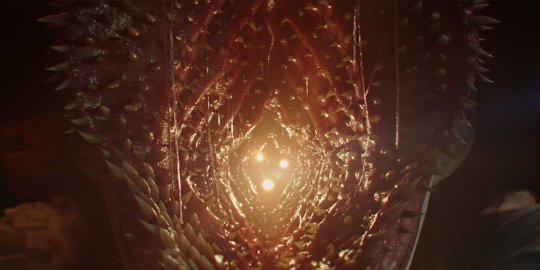
IT Chapter Two does cover the concept of the Deadlights in some way, however, the explanation for what the Deadlights actually are is pretty much nonexistent. Yes, seeing the Deadlights is what allowed Beverly to have her premonitions, but the movie didn't explain that looking into the Deadlights is enough to kill a human being or drive them to permanent insanity.
The Deadlights aren't something that Pennywise has control over. They're actually as close to his true form as he can appear on earth and as a human being is capable of perceiving.
9 No One Knows It's True Form
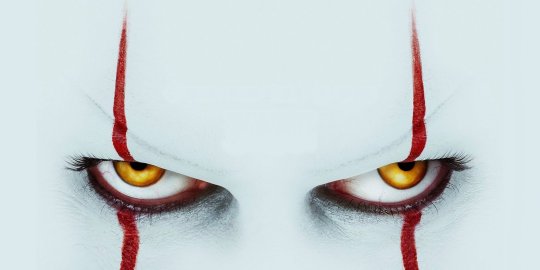
Although Pennywise almost always takes on an appearance that is recognizable to the human beings that see him, the true form of It is something that is completely unknown and completely incomprehensible to the human mind. It's originally from something that Stephen King calls the macroverse, which is basically a universe that contains a multitude of universes within it, including our own universe.
Obviously It is now in this universe, however, it's unclear if It can really revert to its true form within this world and how the human mind would perceive It if they saw it. It seems likely any person wouldn't be able to comprehend It at all.
8 It's Real Form Is Inspired By H.P. Lovecraft
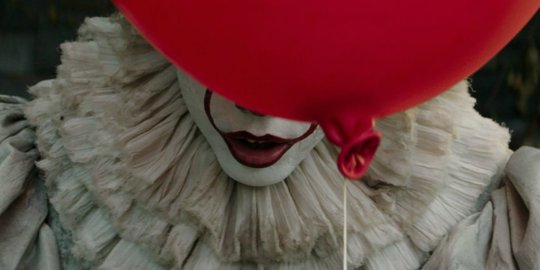
Unless you're an avid horror fan, the name H.P. Lovecraft is probably a name that you've heard in passing at best, but this author's work has inspired a lot of the horror genre for over a century. Pennywise the clown very clearly draws inspiration from some classic Lovecraftian ideas.
RELATED: 10 Things About It: Chapter 2 That Make Absolutely No Sense
A running theme within Lovecraft's work is the idea of monsters that are from another dimension and are incomprehensible to humankind. Another common theme is the idea of seeing something that is so horrifying that it kills the person who sees it or drives them insane. The true form of It is very clearly a Lovecraftian monster.
7 Pennywise Is Awake For A Year
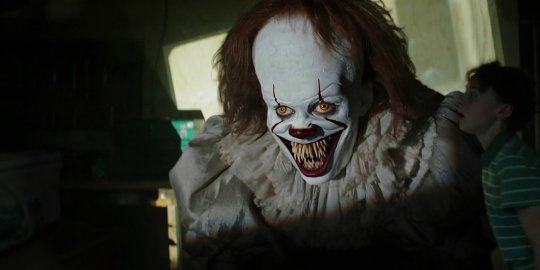
The time span of both It movies feels like it takes place over a relatively short period of time. However, Pennywise's hibernation cycles seem to be pretty specific. Pennywise goes into a deep sleep state for 27 years at a time, but when he awakens to feed, he's awake for about a year at each time.
So although the Losers Club seem to discover Pennywise and go toe to toe with him pretty quickly afterward, he may have been awake for quite a bit of time before actually getting into it with the Losers.
6 Pennywise May Be Female
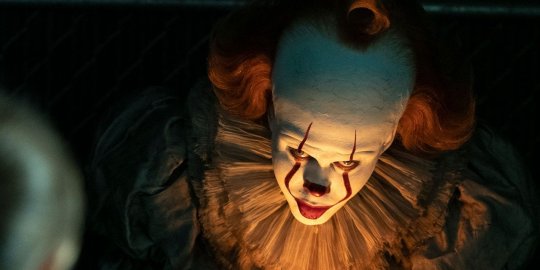
It's difficult to nail down what exactly Pennywise looks like in his most fundamental form, and Stephen King has been clear that his true form is not something that can really be perceived by a normal human anyway. But the spider form of It that occasionally rears its ugly head may be the closest to his real appearance as he can get in his earthly form.
To add onto the creep factor, even though It seems to take on the appearance of masculine entities more often than not, his spider form appears to be a pregnant female spider, leading some characters in the book as well as fans of the book to speculate that he's actually a she.
5 It May Not Be The Only It
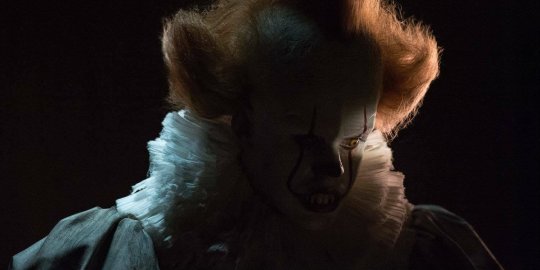
Once again, it is believed that the closest to It's real form that can be achieved while Pennywise is on earth is the pregnant female spider that he appears as towards the end of the novel. However, It doesn't appear as just any old spider, Pennywise appears as a pregnant spider.
RELATED: IT Chapter Two Characters And Their D&D Character Alignments
So it's plausible that It may be capable of reproduction and that there may be a bunch of It babies running around in other parts of the world, or even on other planets or in other universes. It's a grim thought, but given how incognito Pennywise has managed to be in Derry, it's certainly not outside the realm of believability that there are more out there.
4 It Has A Great Enemy
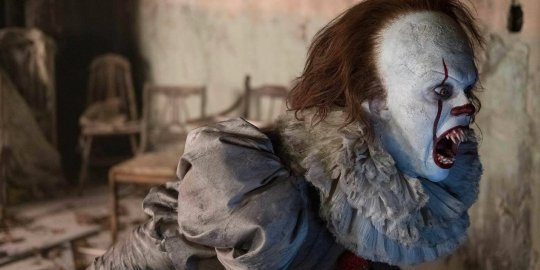
The being that we mostly see in the form of Pennywise is actually an ancient, primordial evil that has existed long before our universe even existed. And while It used to exist in the macroverse that contains our universe it's certainly not the only thing that exists there.
RELATED: IT Chapter 2 Characters Sorted Into Hogwarts Houses
Pennywise actually has a great enemy called Maturin. But Maturin is supposed to be a force for good, and it seems like both It and Maturin were created as counterbalanced energies to one another that date back to before the beginning of time itself. And although these creatures possess a nearly godlike level of power, they were both created by Gan, which is essentially Stephen King's version of god.
3 The Enemy Is A Turtle

So the forms that these ancient beings take on aren't things that a regular human mind can fully comprehend, but Maturin, the natural rival to It, is basically a giant turtle. And when we say giant, we mean giant. Maturin exists in the macroverse which contains many different universes, and the universe that we exist in is one that Maturin himself created when he had a brutal stomach ache and puked this universe up.
Not even kidding, you can look this all up. But despite the fact that he is powerful enough to create universes he was not powerful enough to defeat It.
2 There's A Reason It Goes After Children

Children are just humans that generally make for easy prey, and Pennywise has some pretty specific reasoning behind why he goes after kids instead of adults. Pennywise is a character that thrives on creating illusions of the fears of his prey and making them feel like a reality, and children just have much easier fears to exploit than adults do.
Pennywise can exercise a lot of control over his own appearance as well as what his victim will perceive when he's trying to control their minds, but adults tend to have more complex and internal fears, whereas scaring children is always pretty easy.
1 It's Not Even From This Universe

It's entirely understandable that Andy Muschietti left out a lot of the more mystical and esoteric elements of the novel It. Aside from the fact that there just needed to be a lot of editing down of the source material in order to squeeze the entire story into two movies, the whole macroverse storyline is a difficult concept to understand and even more difficult to make a cinematic reality.
However, when they were explaining the origins of Pennywise on earth, they could have easily explained that he wasn't just an alien, but he actually came from a different dimension.
NEXT: 10 Great Gifts For Fans Of IT
source https://screenrant.com/pennywise-facts-left-out-it-chapter-one-chapter-two-movie/
0 notes
Text
"Lawnmower Man 2"- A few competent scenes and a whole lotta unintentional laughs make it a fun one-time watch for fans of trashy b-movies. All else need not apply.
Pretty much a permanent fixture on IMDb's Bottom 100 list, 1996's "Lawnmower Man 2: Beyond Cyberspace" is not only widely considered one of the worst sequels ever made... it's widely considered one of the worst films ever made period. While the second claim might be somewhat debatable in retrospect (oh, it's bad... it's really bad, but maybe not "worst of all time bad"), the former is most certainly a given. The original film is a wildly dated but mostly harmless sci-fi thriller about a mentally-challenged man who is granted superhuman intelligence and abilities through the power of virtual reality, sending him spiraling on a path towards an evil plot for world domination. It's forgettable save for its cheesy early-CG effects and a few decent performances by future star Pierce Brosnan and the titular Lawnmower Man Jobe played by Jeff Fahey. It's a mediocre film, but it hit it fairly big at the box office, so a sequel was pretty much guaranteed.
What people couldn't have predicted, however, is just how incredibly insane the follow-up would be. "Lawnmower Man 2" is frankly bizarre, and never anything less than over-the-top from scene to scene. Story goes the studio-suits behind this mess were hoping to spin the series off into a teen-aimed superhero movie franchise set in cyberspace (a far cry from the more deliberate and slow-burn thriller the original was), and this film would be sort-of a stepping stone in that direction. Add to that woeful miscasting of pretty much every lead character, a lot of nonsensical ret-con work that frequently butchers the storyline of the first film and post-production problems including the director being locked out of the editing room... and you pretty much have a recipe for disaster.
Six years after the events of the first film in a now post- apocalyptic world right out of "Blade Runner" (I guess?), Jobe (now played by Max Headroom himself, Matt Frewer) has been discovered and brought back from the brink of death by an evil megalomaniacal VR tycoon, who needs him to perfect the film's MacGuffin- the "Chiron Chip"... the most powerful computer chip ever conceived. After re-discovering his old friend Peter Parkette (Austin O'Brien) in virtual reality, Jobe goes on a quest to track down the creator of VR, Dr. Trace (Patrick Bergin), who has key information that will assist in Jobe taking control of the Chiron Chip... or something stupid like that. Blah, blah, blah... Jobe goes power-crazy yet again and tries to take over the world with the Chiron Chip. Chiron Chip, Chiron Chip... Chiron Chip. You'll be sick of that combination of words by the time the film's over. They say it constantly.
Basically, the film is a weird mixed-drink from Satan's tavern... one part "Blade Runner", one part "Super Mario Bros. The Movie", one part "Tron", one-half part the original "Lawnmower Man"... topped off with five parts "Highlander 2: The Quickening." Garnish with overacting. Serve over ice from Flint, Michigan.
Everything is a fundamental mess. The storyline is nonsensical and completely unclear, with the main focus being on delivering constant techno-babble as often as possible while punctuating every few scenes with an explosion or bizarro murder-sequence as Jobe picks off various targets, though sanitized for a PG-13 rating. As mentioned above, the film's MacGuffin of choice is the "Chiron Chip", though the Chip itself is poorly established and doesn't seem to amount to all that much in the story. There's also some genuinely laughable mis-judgments on the part of the filmmakers to try and gear the film towards children as per studio request... so you get uproarious scenes where the "Information Superhighway" is personified as an actual highway in cyberspace that our heroes get into a car-chase on. I could not stop laughing. Everyone in the cast mugs for the camera in such a way that you cringe so much that you can't help but giggle, with special props going to Frewer, who turns the quiet and sinister Jobe from the first-film into a cackling Jim Carrey wannabe who spouts one- liners at the top of his lungs in every scene. The editing is an absolute mess, with not a single moment given more than an instance of breathing room before it rockets to the next scene... probably because producers oh-so-needed it to appeal to the kids with their "Mtv's and their Nintendo's and whatever kids these days like." And the effects sucked, plain and simple. Not only were they poor in comparison to other films released around the time... they're somehow objectively worse than the effects in the original four years earlier!
Yet... I don't totally hate the film, and I even do have a mild recommendation for it. It's awful. Dreadful. But also kinda entertaining. Fans of trashy B-movies and bad cinema will probably get a kick out of it, much as I did. It's worth watching once for those crowds. I know I couldn't stop laughing at it. It's just so baffling and mind-numbing, that even as you feel your braincells depleting... you might get some serious chuckles thanks to it. Also, I can't help but comment... there is an occasional hint at brilliance here and there. You get the feeling that director/co- writer Farhad Mann was really trying his hardest, and there are a few scenes that are competently filmed and directed. I think there's a significantly better film somewhere beneath the surface that you glean the occasional look at here. Not a good film... but a better film. It'd be interesting to see what his original vision was.
But really, aside from bad-movie buffs, I cannot in good conscience recommend "Lawnmower Man 2" to anyone. It's terrible. Strange. And wildly confusing. And it is easily and indisputably one of the worst sequels ever made, earning a much-deserved 1 out of 10 for me.
0 notes